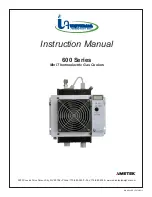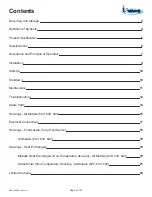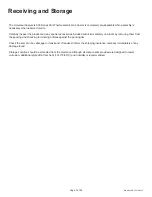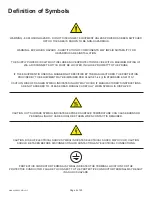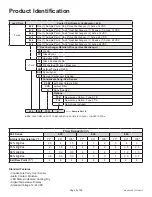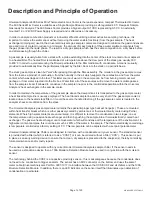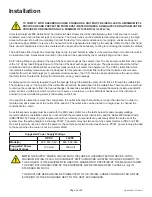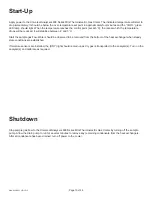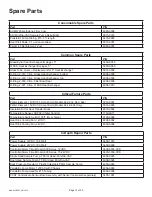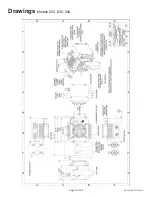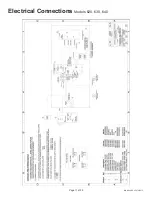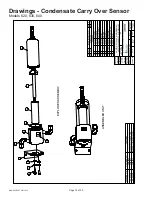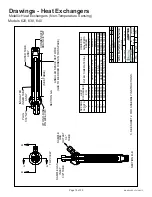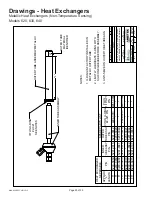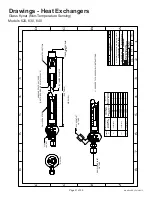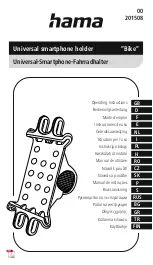
Page 6 of 25
Page 7 of 25
MAN.600.REVF.07012015
Description and Principle of Operation
Universal Analyzers 600 Series Mini Thermoelectric Gas Cooler is the least expensive, compact Thermoelectric Cooler.
The 600 Series Mini Cooler is available as a Single Sample Stream providing a self-regulated 4.0
°
C Dewpoint Sample
Gas ready for Analysis. The 600 Series Cooler provides a Signal output 0-1VDC representing 0-50
°
C. An externally
mounted 12, or 24VDC Power Supply is required and is offered as an Accessory.
In order to analyze combustion products or incinerator effluents utilizing a direct extractive sampling technique, it is
important to remove the water vapor without removing the water soluble fraction(s) from the gas sample. The heat
exchangers (impingers) used in the Universal Analyzers gas sample coolers are designed to minimize the gas/condensate
area and time of contact to reduce to a minimum, the amount of mass transfer of those water soluble components from
the gas phase into the liquid phase. The result is a dry gas sample which has the same composition on a dry basis before
and after passing through the chiller.
A gas sample is usually taken from a stack with a probe extending into the center of the stack mounted onto or adjacent
to a heated filter. The heated filter is maintained at a temperature above the dew point of the stack gas, usually 300
°
to 400
°
F. in order to avoid cementing the filtered particulates to the filter medium with condensate. A means is usually
provided to automatically blow the particulates trapped by the filter, back into the stack on a periodic basis.
The stack gas sample is clean but "wet" after passing through the filter assembly. The moisture in the gas sample comes
from the fuel as a product of combustion, from the humidity in the air which supports the combustion and from the water
content which was trapped in the fuel. This latter source of water in the sample can be from burning moist coal, wet
garbage, or from water injected into the fire box. Water from all of these sources will remove the water soluble gasses
from the sample stream if allowed to condense in the sample line prior to the controlled separation within the Universal
Analyzers' heat exchangers in the sample cooler.
In order to maintain the temperature of the gas sample above the dew point as it is transported to the gas sample cooler,
a heat traced sample line is usually employed. The heat traced sample line can be very short if the gas sample cooler is
located close to the heated stack filter or it could be several hundred feet long if the gas sample cooler is located in the
analyzer shack some distance from the stack.
The Universal Analyzers gas sample cooler contains the special impinger type heat exchanger(s). These are mounted
within heat transfer blocks which are either passively cooled by ambient air or thermoelectrically cooled using Peltier
elements. Where high water contents are encountered, it is efficient to remove the condensate in two stages, one at
the temperature using a passive heat exchanger and then by pushing the sample into a thermoelectrically cooled heat
exchanger. The passive heat exchanger can remove water which will condense at the temperature of the environment. In
high water content samples, this could be as much as 80% of the water in the sample. The thermoelectrically cooled stage
is temperature controlled at a factory setting of 5
°
C. This temperature can be adjusted with a set point potentiometer.
Universal Analyzers Sample Chillers are designed to interface with a condensate carry over sensor. The standard sensor
is provided with a filter (which is referred to as a “CCSF”) or it can be ordered without a filter (“CCS”). This sensor is put
in place as an early warning device to ensure that a clean, dry sample is presented to the analyzer(s), thereby minimizing
future maintenance and/or costly repairs.
The sensor is designed to operate with any
current
model Universal Analyzers sample chiller. If the sensor needs to
be used as a standalone device then a 100A Moisture Detection Module must be used in conjunction with the moisture
sensor.
The technology behind the CCSF is a capacitive proximity sensor – this is advantageous because the condensate does
not need to be conductive to trigger an alarm. The sensor has an M12 connector on the bottom and uses the same 1
meter cable (Universal Analyzers Part No. 3907-1017) to interface between the CCS/CCSF and all chillers and the 100A
Moisture Detection Module. In addition, there is an LED indicator on the sensor itself that illuminates upon detection of
condensation or particulate.

